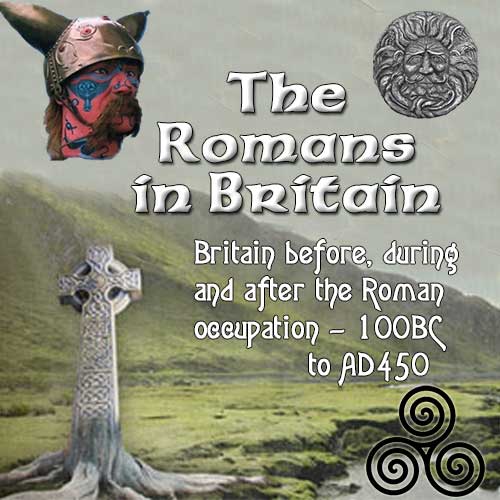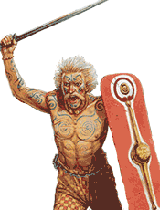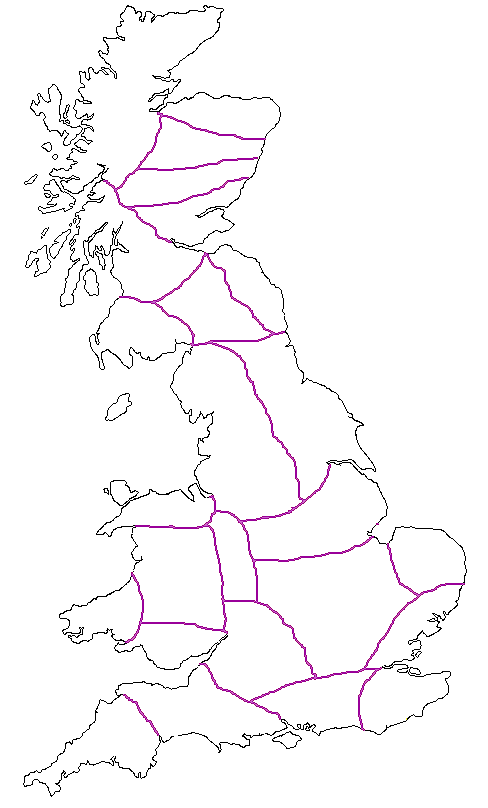The Venicones Tribe
Background to the Venicones
![]() This was a Celtic tribe that was located in Fife (now in
Scotland) and on both banks of the Tay. The tribe's existence there was recorded between the first and
second centuries before perhaps merging into other, later tribal groupings. They were bordered by the
Taexali to the north, the Caledonii to the west (perhaps the original tribe of that name into which was
lumped all the other western tribes by Roman writers), the Epidii to the south-west, and the Damnonii
and Votadini to the south. Unfortunately for the Venicones, they occupied the very region that the
Romans needed to invade several times in order to quell attacks by Picts in the east of the Highlands,
including attacks by the 'Pictish navy'. A legionary fortress was built at Inchtuthill, Tayside (Pinnata
Castra), which remained occupied during the late first century by the Twentieth Legion Valeria.
This was a Celtic tribe that was located in Fife (now in
Scotland) and on both banks of the Tay. The tribe's existence there was recorded between the first and
second centuries before perhaps merging into other, later tribal groupings. They were bordered by the
Taexali to the north, the Caledonii to the west (perhaps the original tribe of that name into which was
lumped all the other western tribes by Roman writers), the Epidii to the south-west, and the Damnonii
and Votadini to the south. Unfortunately for the Venicones, they occupied the very region that the
Romans needed to invade several times in order to quell attacks by Picts in the east of the Highlands,
including attacks by the 'Pictish navy'. A legionary fortress was built at Inchtuthill, Tayside (Pinnata
Castra), which remained occupied during the late first century by the Twentieth Legion Valeria.
The Venicones name was pronounced 'Wen-ichones', most likely due to a shift in the language. In the case of this tribe, the original name was Venet (the 't' becoming a 'ch') plus '-on' (plural genitive) plus the later addition of '-es', which is another (possibly unnecessary) plural suffix. The Romans would probably have mispronounced it. They apparently added their plural suffix to the already-present plural genitive, giving us Venicones. The origin of the name suggests a link to the Veneti tribe of Armorica. Elements may have fled Roman advances, arriving in northern Britain and also, according to the geographer Ptolemy, settling in County Donegal in Ireland.
Gwynedd is said to have been founded by Britons from Manau Gododdin which was located on both sides of the Firth of Forth and the River Forth. These Britons had a fort believed to be at what is now Clackmannan ('Stone of Manau'), north of the Forth. A second possible candidate for their fort could be above Tillicoultry (Castle Craig, five kilometres to the north, but unfortunately destroyed by a quarry). Another natural area for a citadel can be found at Stirling (a few kilometres to the west). Bede mentions Stirling as urbs Guidi, and this was adapted to provide the Firth of Forth with its early Welsh name of merin Iodeo, 'the sea of Iudeu'. Unlike later British writers, Roman writers did not describe this area as Gododdin territory. To them it was the land of a Pictish (British) tribe called the Venicones, and it was these people, perhaps tributary to the Gododdin Britons, who founded Gwynedd, coming from a fort in Fife called Manau, which was nominally under Gododdin overlordship, hence 'Manau Gododdin'.
The region's most famous son is, of course, Cunedda Wledig, the chieftain who, according to Welsh tradition, was invited to found Gwynedd on the condition that he freed the region from Irish raiders. As he hailed from Venicones territory, his traditional ancestry is shown in this list. Much of the list dates from anything up to the tenth century, so its believability beyond Tacitus ap Cein is highly doubtful and preceding names are backed in lilac to reflect their legendary status. However, given that the tribe may have fled the first century BC arrival of the Romans in Armorica, the assumed dating for the first name in the list (apart from the dubious addition of a British high king before him), that of Afallach, does lend it something of an air of authenticity. It might be highly speculative to suggest, but perhaps it was this chieftain who led the migration to Britain.
(Information by Edward Dawson, and additional information taken from The La Tene Celtic Belgae Tribes in England: Y-Chromosome Haplogroup R-U152 - Hypothesis C, David K. Faux. Sources listed in the 'Barbarian Europe' section of the Sources page.)
























